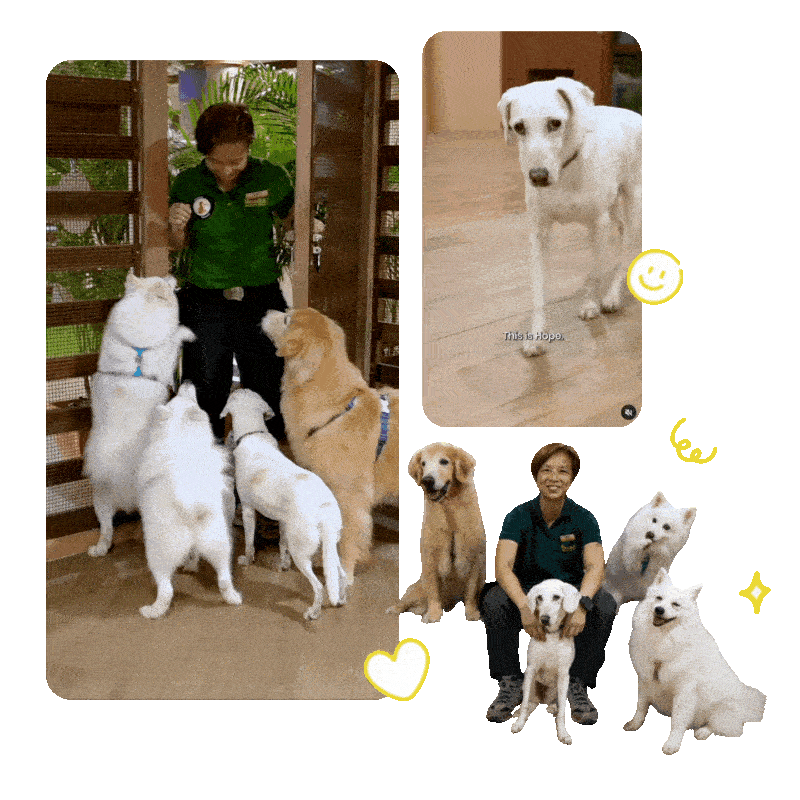Lesson 1 for Tiko
Bark
Bark
Understanding & Managing Tiko’s Barking
🎉 Hey Sharin, welcome to Lesson 1! Let’s dive into why Tiko barks and how we can help him feel calmer and more confident.
Why Does Tiko Bark?
Tiko is an adorable Mini Dachshund puppy who finds it extra hard to be left alone. 🐶💔 His barking isn’t just noise — it’s his way of saying, “I miss you! Don’t leave me!” Since Dachshunds are known for their strong attachment to their humans, it’s no surprise that Tiko struggles with solo time.
Right now, his barking is likely a mix of separation distress, insecurity, and boredom. If left unaddressed, it could turn into full-blown separation anxiety, making alone time stressful for both Tiko and his family.
The good news? Separation anxiety is preventable and he’s still young, which means this is the perfect time to help him build confidence and learn to stay calm when home alone. The earlier Tiko learns independence, self-soothing, and positive alone-time habits, the easier it will be for him to stay happy and relaxed — no matter who’s home!
Our goal isn’t to stop Tiko from loving his family (of course he does!) — it’s to help him feel safe, secure, and confident even when they’re not around. 🐾💙
🐶 Want to know more?
Download Tiko’s full report for even deeper insights!
Simple Recommendations & Exercises to Start Today
These easy techniques fit right into your daily routine and will make a huge difference in helping Tiko feel more relaxed.
Step 1: Creating a Calm Home Environment for Tiko 🏡🐶
Tiko’s barking is mostly driven by separation distress, so making his home feel safe and predictable—especially when he’s alone—will help him feel more secure and reduce his urge to vocalize his frustration.
🎵 Use calming background noise – White noise, classical music, or even a gentle fan can help mask sudden sounds and make the space feel less empty when Tiko is alone. Try playlists designed for relaxing dogs, like White Noise Sounds, Noise & Rain, Relaxing Piano Music, Relaxing Music When Dog Is Alone, Lo-Fi Relaxing Music.
🚪 Create a cozy “safe zone” – Since Tiko’s distress is triggered by being left alone, setting up a dedicated space where he feels secure is essential. A covered crate or a comfy, enclosed bed in a quiet area can help him feel safe and settled.
🛏 Find his “safe zone” – If Tiko tends to bark near windows, doors, or busy areas, setting up a cozy space away from those spots can help him feel more at ease.
🦴 Give him something to focus on – Before leaving, provide a stuffed Kong for Puppies (filled with peanut butter or kibble) or a long-lasting chewy treat. This will keep his mind engaged and help him associate alone time with something positive.
Paw Tip: Notice if Tiko’s barking happens at specific times — like right after you leave or when he hears movement outside. A small adjustment, like leaving a worn t-shirt with your scent or setting up a white noise machine, can make a big difference!
Step 2: “Safe Space Training” – Helping Tiko Feel Secure When Alone
Tiko needs a dedicated, cozy spot where he feels safe and relaxed when left alone. By introducing a positive association with his safe space, we can help him build independence and reduce separation distress.
📅 Practice: 2-3 times per day & 3-5 times per week during 5-10 min
🕒 Best times: Before and after alone time
Step-by-Step Training Guide:
Set Up a Comforting Space – Choose a quiet area like a pen or crate with a soft bed, a favorite blanket, and enrichment toys (like a stuffed Kong or a snuffle mat). This space should feel secure, not like a punishment.
Encourage Positive Associations – Use treats, calm praise, or gentle petting to help Tiko feel at ease in his safe zone. Let him explore it freely before asking him to stay inside.
Gradually Increase Alone Time – Start with short sessions while you’re still nearby, then slowly extend the time to 10 more seconds as he gets comfortable. If he stays calm, reward him when you return to reinforce the positive experience.
Paw Tip: If Tiko starts whining or barking, don’t immediately rush back — wait for a moment of quiet before returning. This teaches him that calm behavior gets rewarded, not barking!
🌟 Did you know?
Just like us, dogs have food preferences! Discover which protein motivates your furkid the most.
You Got This! 🙌
Tiko is learning that he can feel safe and secure, even when alone. With a calm environment, positive reinforcement, and gradual training, he’ll soon build the confidence to relax independently.
🐶 Try these strategies this weekend and see how Tiko responds!
Separation anxiety can feel overwhelming, but you’re not alone. If you need extra guidance, just drop a message on PawPaw’s WhatsApp — Natalie is here to support you! 💙
🐶 Looking for more insights?
Send us a message with a video of barking or photo/description of your environment — we’ll help you!
How Did You Like This Lesson?
We’d love to hear your thoughts! On a scale from 1 to 10, how would you rate this lesson? Your feedback helps us make each session better and more helpful for you
🔜 What’s Next?
In Lesson 2, we’ll take these skills even further and show you how to help Tiko stay calm and relaxed when you leave. You’re making great progress — keep up the amazing work!



